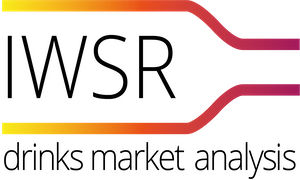The IWSR study indicates that at present, the low- and no-alcohol sector is poorly served, with few clear category leaders. Though forecasted to grow significantly, overall the current marketplace for low- and no- alcohol products is still small in most parts of the world.
“The ‘Dry January’ movement isn’t new, but one of the reasons we’ve heard so much more about it this year is the broader trend that points to consumers’ increased interest in physical and mental health. And that’s creating an interesting shift in consumer preference for low- and no-alcohol beverages, outside of soft drinks,” said Mark Meek, IWSR’s CEO.
“For leading producers of beverage alcohol, this obviously presents considerable opportunity to develop new products, claim their share of the category, and ultimately grow revenue.”
Here is a breakdown of specific market trends in low/no alcohol:
United States
Though 52% of US consumers surveyed in the IWSR study report that they’re trying to reduce their alcohol intake, over 70% of people say they have not yet considered drinking low- or no-alcohol beverages. Low and no-alcohol products currently account for only 0.5% of the total US beverage alcohol market in the US, however, a recent influx of investment by key beverage alcohol companies is anticipated to draw in a new generation of consumers, and contribute to the forecasted rapid growth of the category.
The largest category gainer in the low/no sector in the US will be ready-to-drink products (at +38.8% CAGR 2018 to 2022). That’s followed by wine at +17.7%, and spirits at +7.1%. Low/no alcohol beer, which currently accounts for the lion share of the low/no alcohol beverage market in the US, is predicted to grow +5.6%.
United Kingdom
Low/no alcohol products are forecasted to show healthy growth in the UK, led by spirits (+81.1% CAGR 2018 to 2022) and ready-to-drink products (+44.3%). Cider in the UK is expected to grow by +13%, with low/no alcohol wine up +6.6% and beer up +4.9%.
According to the IWSR survey, 65% of the heaviest UK alcohol consumers (25 to 34-year-olds) are trying or have tried to cut back on their alcohol intake. The study also shows that 61% of consumers indicated they have not considered drinking low/no alcohol products – much potential remains to convert those drinkers.
Spain
Spain is one of Europe’s largest and most well-established low/no alcohol drinks markets, particularly in the beer and mixed drinks segments. IWSR survey results show that 95% of Spanish consumers are trying to reduce their alcohol intake, and 80% of people have or would consider low/no alcohol products. Consumption of low/no alcohol is normalised in the country, with widespread coverage within both the on- and off-trade. This trend has been driven by several cultural factors, including the introduction of stricter drink driving laws and a broader wellness and health conscience cultural shift.
At least 50% of bars and 60% of restaurants surveyed in Spain have low- or no-alcohol beverages, many with branded cocktails on their menus.




